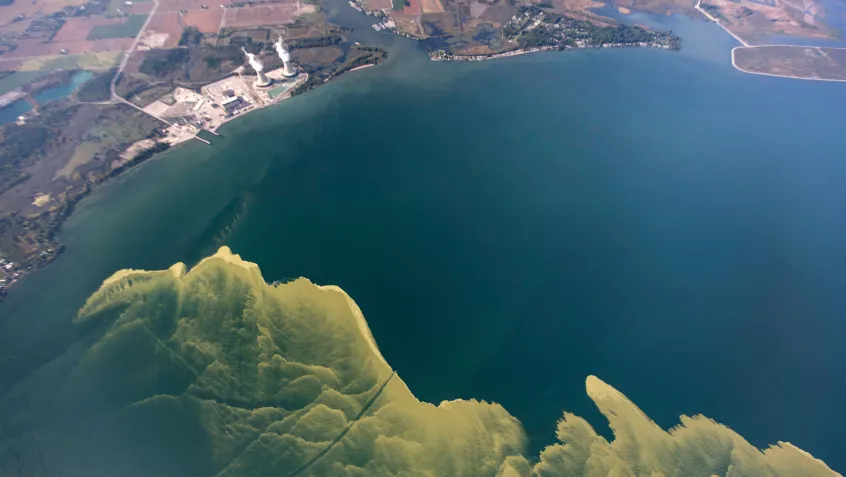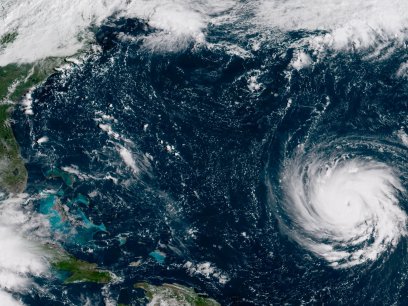
A tide of red washes over a lake, dyeing the water a crimson color. While some people may be more familiar with the crimson tide you see at an Alabama football game, this scenario, dubbed the “red tide,” can occur far outside of the Yellowhammer State.
The idea of blood-red water might seem surreal, but this environmental phenomenon occurs in many places across the United States, from Florida to Maine. This happens when algae—organisms that live in bodies of water and are generally microscopic—grow rapidly and dominate the water surface. Usually algae plays a vital role in ocean and freshwater habitats, providing food to countless aquatic critters. Blooms—or explosions of algae growth—are often harmless, but large outbreaks of algae can occasionally be catastrophic.
As an algae colony grows, dies, and begins to decompose, it uses up lots of oxygen. This depletes the oxygen supply and leaves little left for fish and other marine life, causing many of these animals to die. Some algae, such as the ones that cause the “red tide,” release toxins that are absorbed by shellfish and other creatures. These toxins build up in the ecosystem, harming wildlife that come into contact with the contaminated water. When these algal blooms grow out of control, they can also become a public health hazard.
Harmful algal blooms can cause human illness, decimate fisheries, and devastate lakes, beaches, and other recreational areas. The biggest cause of harmful algal blooms is nutrient pollution, or the excess of minerals like nitrogen and phosphorous in the environment. Increased levels of nutrients in the water can feed larger algae colonies, leading to these large-scale blooms. Nutrient pollution can be exacerbated by human activities, ranging from agricultural runoff to pollution from household cleaning products.
Here is what you can do to protect your water resources:
- Use fertilizers and pesticides sparingly, and always follow package directions. Try to check the weather forecast before application to make sure you're not immediately preceding a rainstorm—the precipitation can wash away your fertilizer into local streams, wasting the product and your money.
- Pick up after your pet. Even if Fido is answering nature's call inside of your own yard, stormwater runoff ignores property lines, and can wash the waste into nearby storm drains and streams. Pet waste is high in nitrogen and phosphorous and encourages algae growth.
- When your car needs a wash, take it to the pros. Washing your car on your driveway means that the soapy water could go right down a storm drain, and out into a waterbody, contributing the detergent to nutrient pollution. Commercial car washes are required to dispose of the wastewater properly.
- Reduce the number of impervious surfaces—where the ground is solid, like on asphalt or concrete—on your property. By switching to pervious surfaces, precipitation is filtered into the ground rather than allowed to wash across the surface, where it can pick up trash and other pollutants before flowing into a storm drain.
- Have your home septic system inspected regularly to check for leaks, and have the system pumped regularly. If you have a home septic system, try to avoid the use of your garbage disposal—this will contribute unnecessary solids to the septic system that you can dispose of elsewhere, causing the tank to fill more rapidly.
- Use phosphate-free cleaners, detergents, and soaps to avoid fueling harmful algal blooms.
- Check out this Safer Choice search engine from EPA to make environmentally friendly shopping easier!
Learn more about what people in your community are doing to cut down on nutrient pollution here.
Sources:
- NOAA. 2017. “What is a Red Tide?” Accessed March 7. https://oceanservice.noaa.gov/facts/redtide.html
- US EPA. 2017. “Sources and Solutions.” Accessed March 7. https://www.epa.gov/nutrientpollution/sources-and-solutions
- US EPA. 2017. “What You Can Do: In Your Home.” Accessed March 7. https://www.epa.gov/nutrientpollution/what-you-can-do-your-home
- Woods Hole Oceanographic Institute. 2007. “Harmful Algae.” Accessed March 7. http://www.whoi.edu/redtide/home


